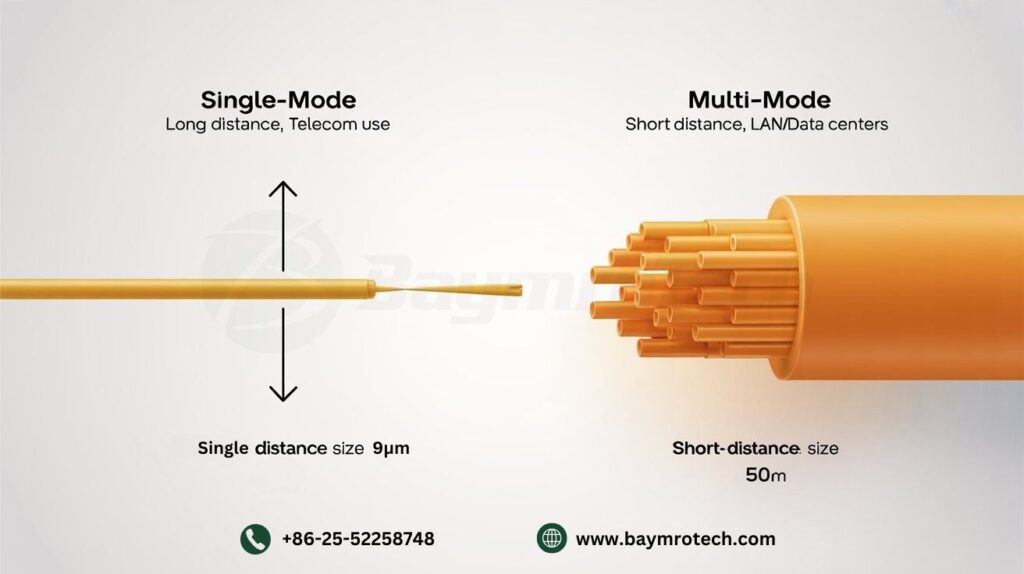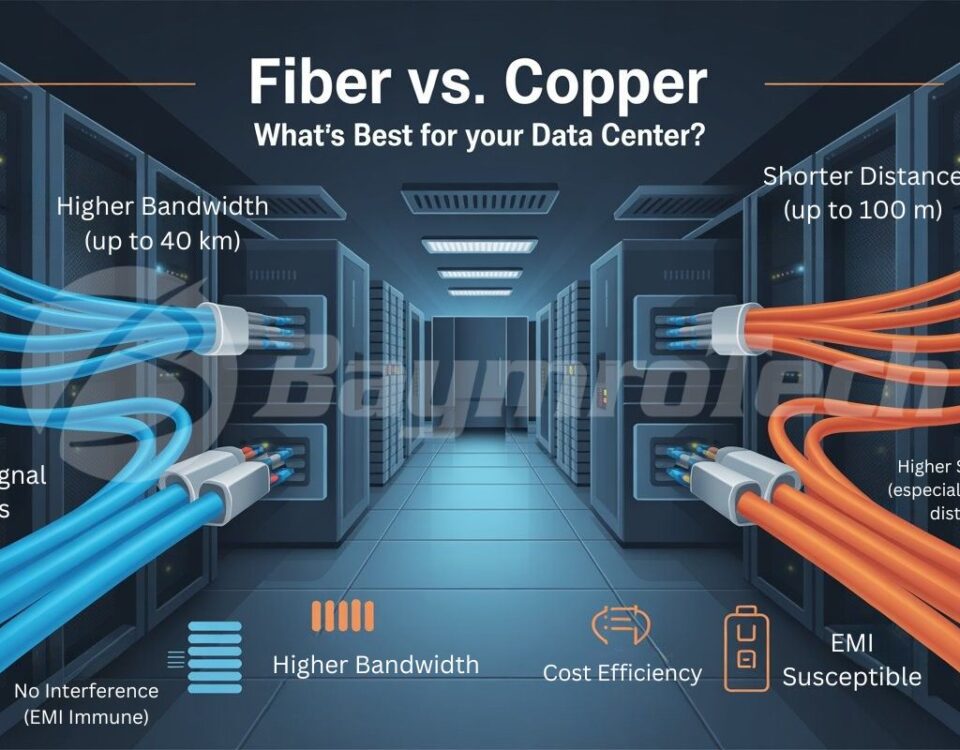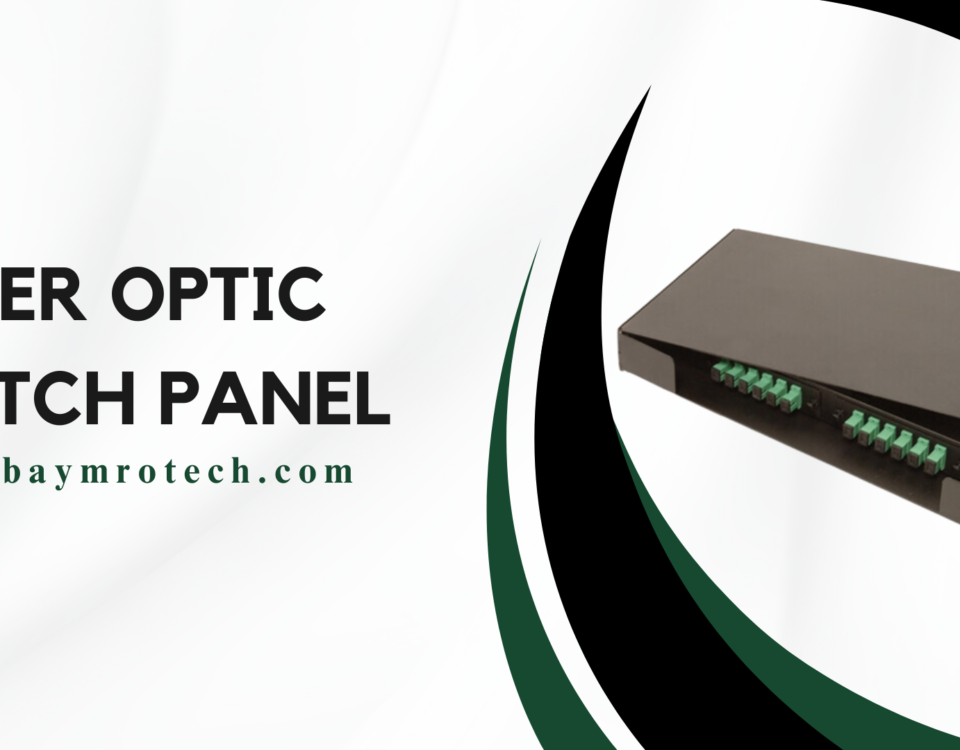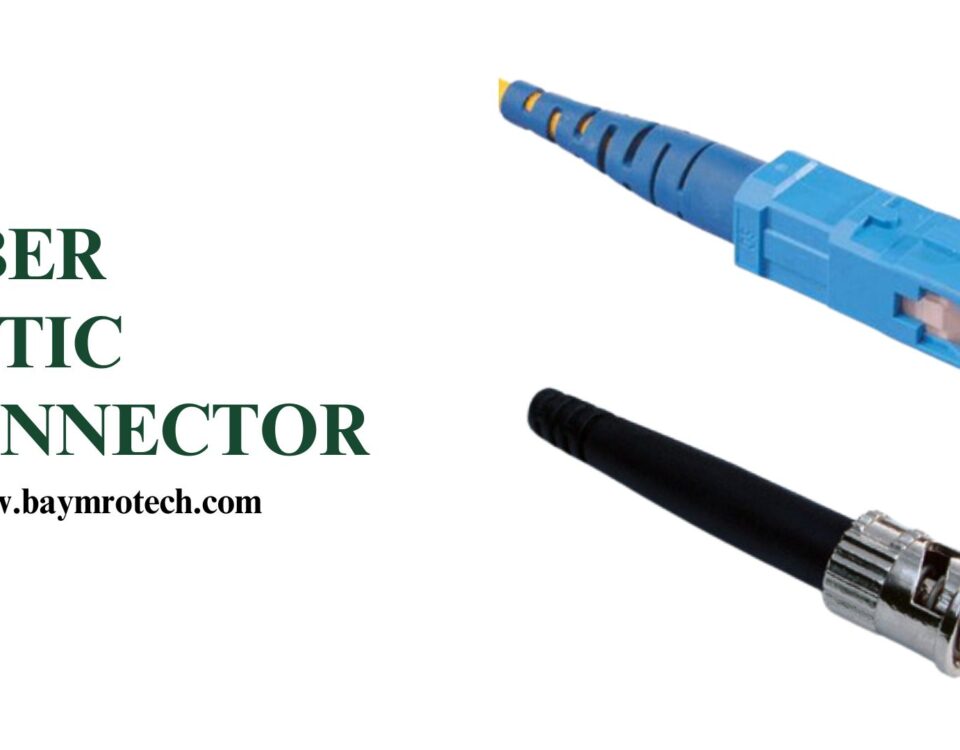Selecting the proper Fiber Optic Cable plays a critical role in successfully building a well-functioning and dependable network. Whether it’s installing a new system, or upgrading an existing one, the right cable will allow for smoother operations and CAD-efficient thoroughput.
Let’s run through the most important points that one should keep in mind before making any decisions.
Where Will the Cable Be Installed ?
The location of where the cable will be used needs to be thought about firstly. This will ensure that you get the right category.
Indoor and Outdoor: Indoor cables have jackets made for fire protection. Outdoor cables have to deal with water and heat so they require weather-proof jackets.
Method of application: Will you hang the cable, run it through a duct, or bury it strip in the ground? Aerial cables need to bear extreme conditions. Duct cables need to have flexibility. Cables meant for burial must resist pressure and water.
Future damages and extra expenses can be avoided by these options and proper category selection.
How far with the data need to travel?
Compute the distances the data needs to cover.
For longer distances, single-mode fiber (OS1, OS2) is the best option available. It does not lose quality and can carry signals over a number of kilometers.
Multi-mode fiber (OM1–OM5) is good for shorter distances which is common in office buildings and data centers.
For longer and faster requirements, single-mode fiber is the best choice. If the distance you are working on is short, then multi-mode is more cost effective.
How Many Fibers Do You Need?
Think about how many ports your user connections will have.
Simplex and Duplex: Great for basic configurations. Duplex cables are more versatile because they allow for two-way communication.
Ribbon or Loose Tube: These are designed for higher fiber counts. They are best for larger scale networks such as those found on campuses or metro systems.
If there is a possibility that your system will scale in the future, it is advisable to select higher fiber count cables from the start.
What Kind of Protection Do You Need?
Different types of fiber cables exist to suit different jobs.
Armored cables: offer protection against cuts, pressure, and animals. Best used for areas such as direct burial and industrial zones.
Tight-buffered cables: easier to work with indoors.
Water-blocked cables: offer outdoor applicability by stopping moisture ingress.
At Baymro Technology, we provide many cable types. As a trustworthy Fiber Optic Cable Manufacturer, we help you find the perfect match for your needs.
Do The Cables Comply With International Standards?
Verify if the cables have appropriate markings that address quality and safety regulations such as ISO 9001, RoHS or Telcordia. These cables are put through rigorous testing and performance benchmarks.
A Fiber Optic Cable Manufacturer respects international standards for his customers earns their trust.


Who Is The Right Supplier For You?
It is equally important to select the right manufacturer for your cable needs. The supplier also needs to understand the market intelligently, offers secondary support and stand behind the product.
At Baymro Technology, we have served telecom companies in more than fifty countries. We know how important your telecom equipment needs are to your business and offer you customized solutions, design support, and strategic guidance as you expand.
Conclusion
Choosing a Fiber Optic Cable is challenging, especially without following a structured approach. Consider location, distance, number of fibers, and how much protection the configuration needs. Ensure the associated product is compliant. Prioritize suppliers who offer you active support over passive assistance.
Need some advice or a quote? Reach out to Baymro Technology now. We are always ready to assist you in achieving full connectivity on every step of the journey.




